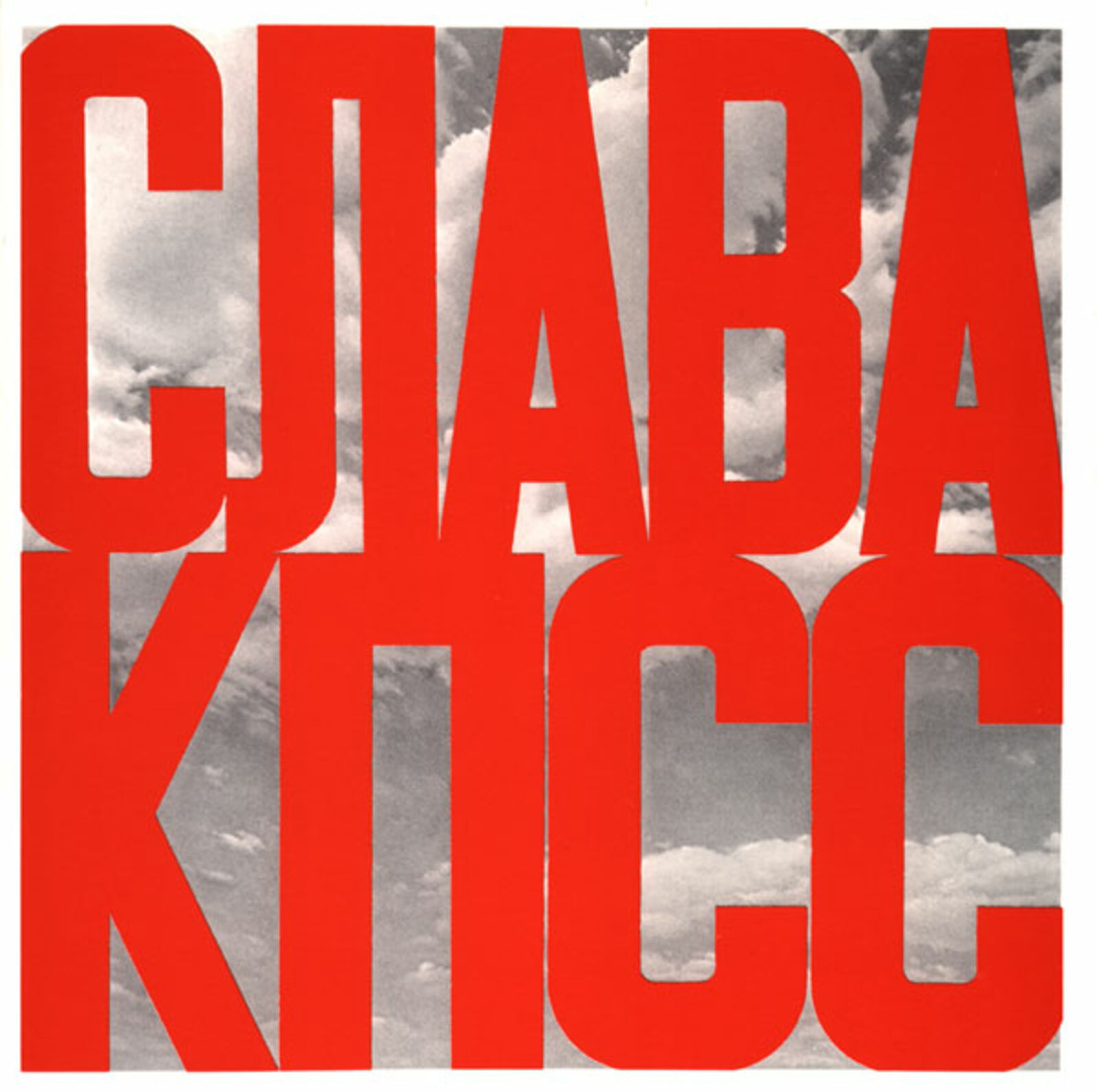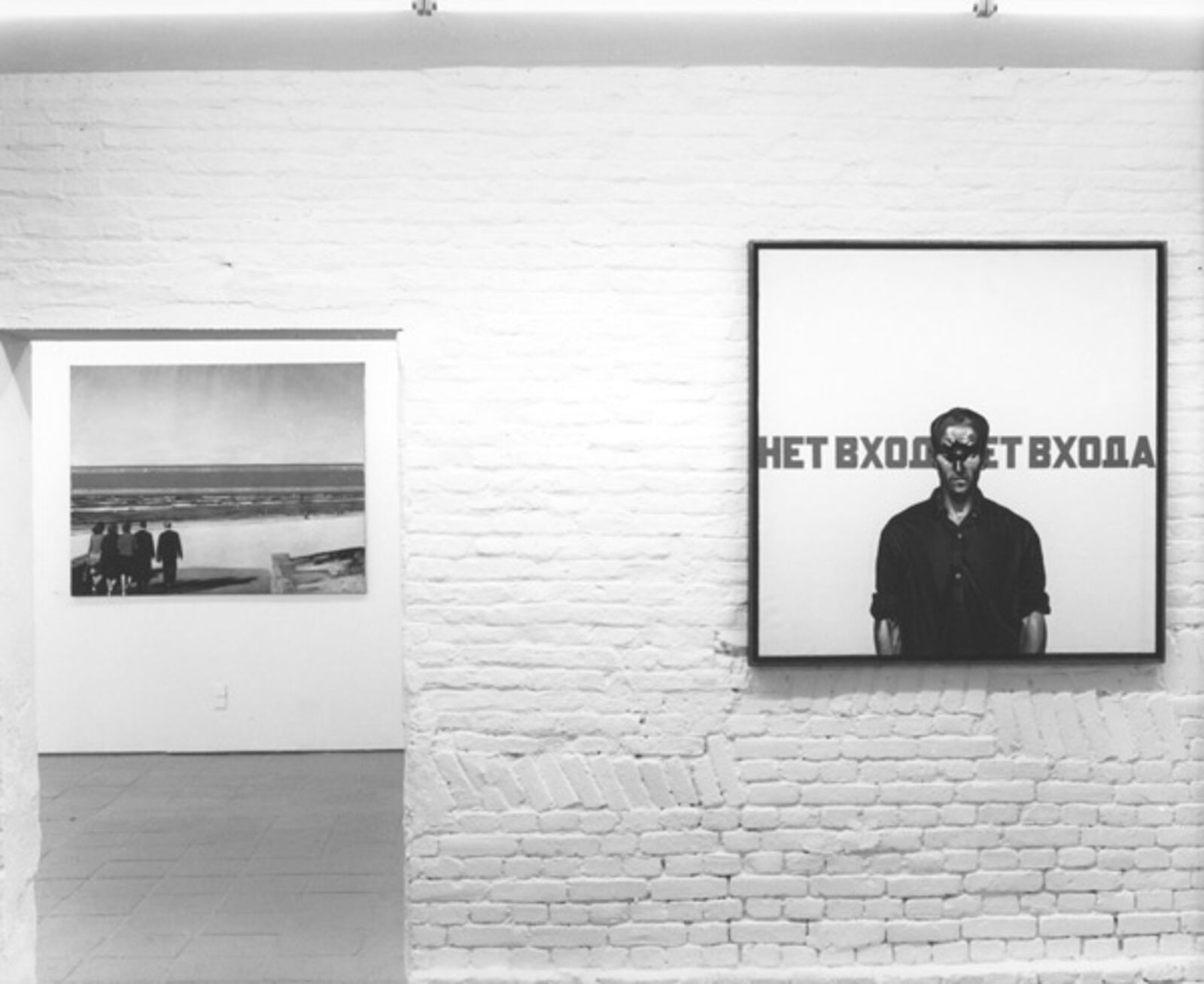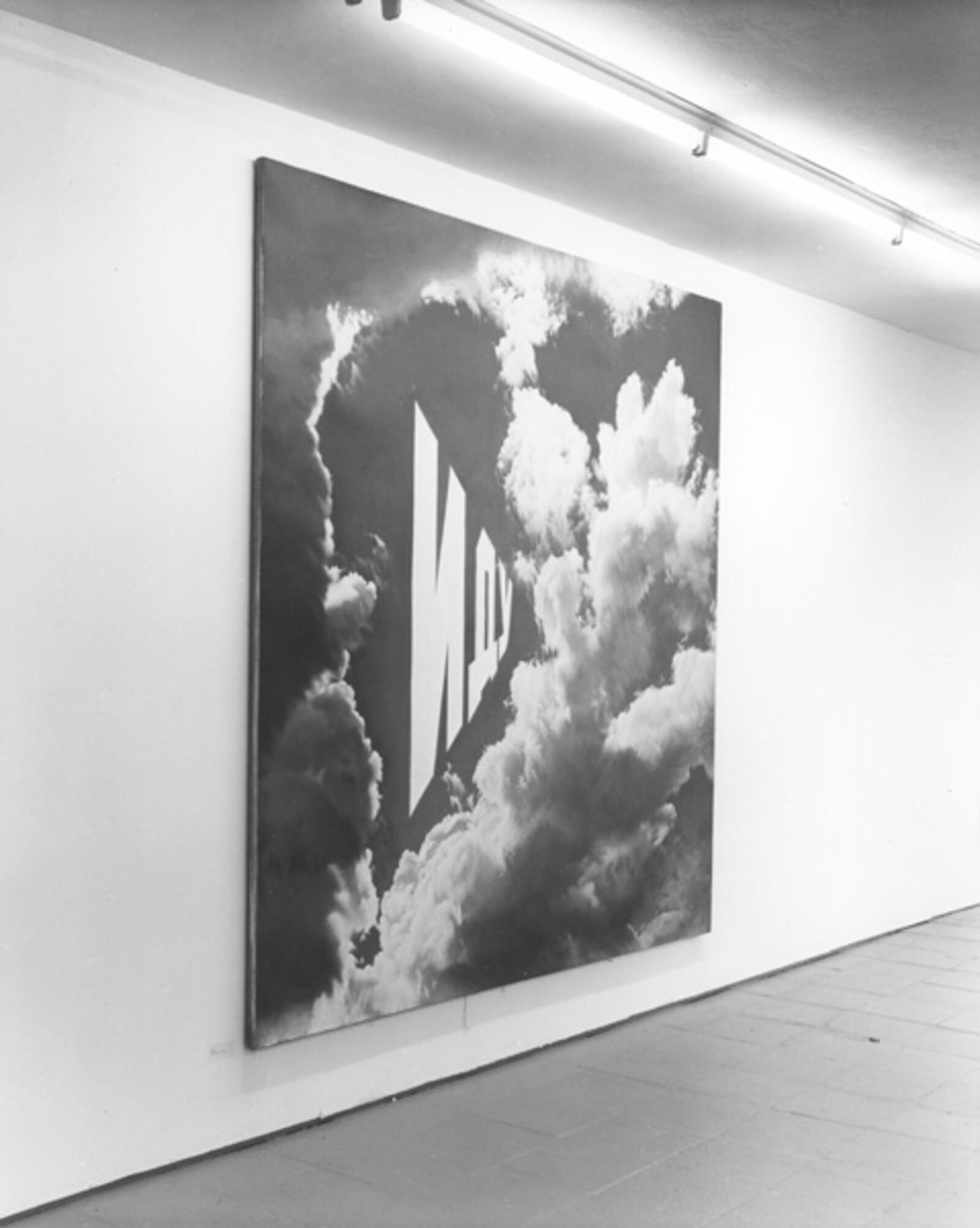Erik Bulatov "Paintings"
11.06–06.07.1988
de Appel, Prinseneiland 7, Amsterdam
de Appel, Prinseneiland 7, Amsterdam

Invitation

left: Left Horizon, 1971-'72; right: Selfportrait / There's no entrance, 1975
© Pieter Boersma, Amsterdam
© Pieter Boersma, Amsterdam

I am going, 1975
© Pieter Boersma, Amsterdam
© Pieter Boersma, Amsterdam

Krassikow Strasse, 1976
© Pieter Boersma, Amsterdam
© Pieter Boersma, Amsterdam
‘The Moscow artist Erik Bulatov (1933) had his first exhibition abroad in 1973 in the Dina Vierny gallery in Paris. In the following years work by Bulatov was hardly shown in Europe. Now, in 1988, his oeuvre - which is not that extensive, because Bulatov sometimes works for years on a painting - has been selected in different ways by a few European curators. After Zürich, Frankfurt and Bonn his work can be seen in De Appel, simultaneously with a show by Simon Linke. Bulatov has also hardly been able to show any of his work in Russia: only eight times since 1965, and then it concerned one or two works, the exhibition lasting one hour, an evening, or just a few days. Before Perestrojka his work wasn’t officially recognized because Bulatov includes the language and typography of official announcements on posters and propaganda banners in his paintings. These texts that he superimposes on the image give a kind of friction: the sky, the trees or the landscape that is painted in a traditional way become open to multiple interpretations. The illusion of depth can be strengthened by the political or poetic text, (I go is written in perspective in the sky) or can be cancelled (Glory of the Communist Party of the Soviet Union fills the whole surface of the canvas and blocks out the sky). Also, a grid of red lines in front of a landscape with skier reduces it to a flat surface. Because of this it gets the quality of a reproduction however realistically it is painted. Bulatov indeed uses reproductions as an example; he paints views from postcards and from travel brochures in a way that makes one think of Western hyperrealism. In Sign of Quality the logo of the Soviet Republic is centred in a cloudy sky. It looks like an advertisement for the Soviet Union but because of the title the use of the logo of the great empire gets an ironic flavour. In his work Bulatov exposes the double reality of Russia: the classical Russian motifs such as sky, sea, trees and snow, combined with a reference to everyday life in Russia. The vision of an artist who remained in his home country in search of the real and the true within the fiction of life itself.’ (‘Sign of quality’, Newsletter De Appel, 3 (1988) 3.)
